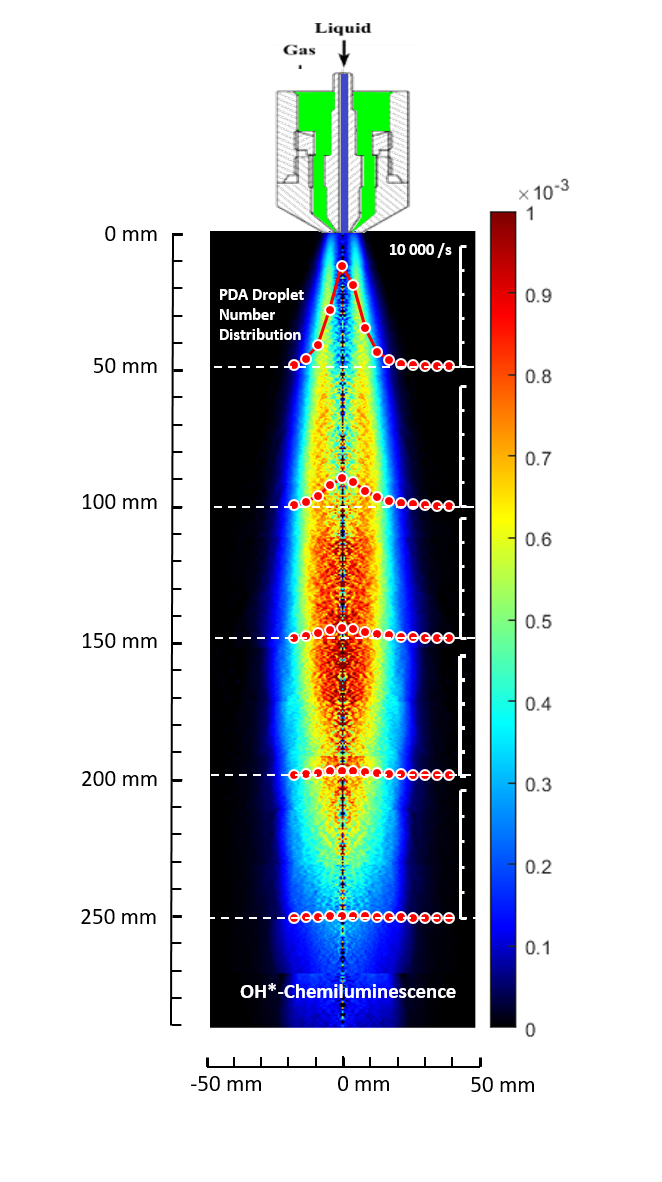Manuel Haas, M. Sc.
- Scientific Assistant
- Room: 158
CN 403 - Phone: +49 721 608-24253
- manuel haas ∂does-not-exist.kit edu
Engler-Bunte-Institut, EBI ceb
Chemische Energieträger – BrennstofftechnologieEngler-Bunte-Ring 1
76131 Karlsruhe
Investigation of Burner-Near Processes in Entrained Flow Gasification
The current and future challenges in the world energy system require a CO2-neutral energy supply together with a closure of the anthropogenic carbon cycle by a shift towards a circular economy. Entrained Flow Gasification (EFG), as an interface technology, is an important building block for future process chains in energy supply system and chemical industry. The EFG process is characterized by a high fuel flexibility (biogenic and anthropogenic residues, plastic waste, …) paralleled by a high flexibility on the product site due to the large utilization spectrum of syngas (chemicals, fuels, polymers, …). Syngas, which is a mixture of CO and H2, is produced by a partial oxidation of the educts.
At the entrained flow gasifier in the bioliq-process developed by KIT, the liquid or suspension fuels are fed to the reactor together with the gasification medium (O2, H2O) by an external-mixing twin fluid nozzle. In the reaction chamber, the fuel is then atomized and mixed with the gasification medium. The fuel reacts with the gasification medium at temperatures above 1200 °C, while numerous thermochemical sub-processes occur simultaneously. Endothermal sub-processes like droplet evaporation, secondary pyrolysis and gasification reactions are enabled by heat release due to exothermal oxidation reactions. A detailed understanding of these sub-processes and their interactions is key to design and efficient operation of entrained flow reactors.
For an efficient gasification process, complete carbon conversion and a high product yield are required. To enable a direct conversion of the syngas in a catalytic process, the amount of impurities in the syngas needs to be minimized. The burner nozzle is a main influence on these parameters, since it controls flow field, reactand mixing, fuel spray and structure of the reaction zones, which highly effect fuel conversion and syngas quality.
These effects are studied at the bench scale Research Entrained Flow Gasifier (REGA) https://www.itc.kit.edu/english/1000.php at the Institute for Technical Chemistry (ITC) https://www.itc.kit.edu/english/57.php. Conventional invasive analytics (Online IR and FID, thermocouples, particle extraction, …) are complemented with advanced optical diagnostics. Phase-Doppler-Anemometry (PDA) is used to measure flow field and droplet size distributions inside the reacting system, whereas Laser-Induced-Fluorescence (LIF) of fuel tracers and intermediate species is used to localize reaction zones and to measure fuel conversion.
Main Activities
- Entrained Flow Gasification (EFG) of liquid and suspension fuels from biogenic and anthropogenic origin (-> Poster)
- Application of optical and laser-based diagnostics to analyze physical and thermo-chemical processes in the EFG flame zone (-> Poster)
- Modeling of fuel conversion for liquid and solid phase
- Investigation of the relationship between fuel conversion and burner concept
Experimental Facilities:
REGA https://www.itc.kit.edu/1000.php
Further information can be found at the website of the Working Group Gasification Technology https://www.itc.kit.edu/english/57.php at Institute of Technical Chemistry (ITC).
| Titel | Ansprechpartner |
|---|---|
| Helmholtz Virtual Institute for Gasification Technology, HVIGasTech |



